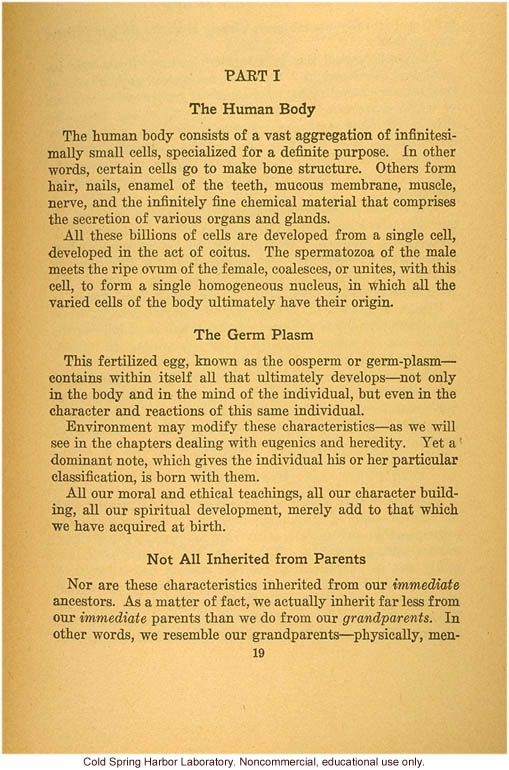Eugenics and sex harmony: The sexes, their relations and problems, by H.H. Rubin (1)

Eugenics and sex harmony: The sexes, their relations and problems, by H.H. Rubin (1)
651. Part I The Human Body The human body consists of a vast aggregation of infinitesimally small cells, specialized for a definite purpose. In other words, certain cells go to make bone structure. Others form hair, nails, enamel of the teeth, mucous membrane, muscle, nerve, and the infinitely chemical material that comprises the secretion of various organs and glands. All these billions of cells are developed from a single cell, developed in the act of coitus. The spermatozoa of the male meets the ripe ovum of the female, coalesces, or unites, with this cell, to form a single homogeneous nucleus, in which all the varied cells of the body ultimately have their origin. The Germ Plasm This fertilized egg, known as the oosperm or germ-plasm - contains within itself all that ultimately develops - not only in the body and in the mind of the individual, but even in the character and reactions of this same individual. Environment may modify these characteristics - as we will see in the chapters dealing with eugenics and heredity. Yet a dominant note, which gives the individual his or her particular classification, is born with them. All our moral and ethical teachings, all our character building, all our spiritual development, merely add to that which we have acquired at birth. Not All Inherited from Parents Nor are these characteristics inherited from our [ital]immediate[end ital] ancestors. As a matter of fact, we actually inherit far less from our [ital]immediate[end ital] parents than we do from our [ital]grandparents[end ital]. In other words, we resemble our grandparents - physically, men- 19
- ID: 10638
- Source: DNALC.EA


